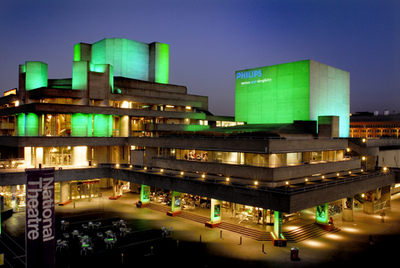
Mr. Arnold: enthusiastic about theatre AND a pair of mutton chops to die for
So said poet Matthew Arnold, more than eighty years before a National Theatre largely subsidized by the government, to which he referred, would actually come about. Last night I saw a good, fairly ambitious staging of All’s Well That Ends Well at the National Theatre for 10 Pounds. I, too, am wondering why this institution which serves as both promoter of theatre to the wider public and patron of the fringe and experimental, wasn’t part of British life sooner.
The last few days have truly been remarkable. I’ve gotten to see great, well acted productions of Stoppard and Shakespeare for free (for me at least). I’m fairly sure there’s nowhere else in the world that this could be done (without a great deal of generosity). After last night and tonight, I’m particularly regretful that I won’t be able to see many more great plays (because of time constraints) even though I’m spending a whole month in London and I might be reimbursed for it.
Anyway, I really did enjoy Arcadia, even if I’ll need to read it, see it again, and then read it again to even get a whiff of what Stoppard ultimately meant. I had the same feeling on reading Rosencrantz and Guildenstern are Dead only one time through (oh, and Travesties was the other play I was thinking of the other day).
All’s Well That Ends Well, despite being a sometimes infuriating play in terms of theme and (ironically) the ending, was also a valuable experience. Mr. Fisher would be happy to hear that I made a conscious effort to consider the lighting as part of the storytelling for probably the first time ever. In retrospect, the lighting went a long way towards creating a feel of a dark, imperfect fairy tale that I think this production was going for. The set design, which frankly is what really got me interested in coming back to see the play, was even better than I imagined.
Although one might expect a national theatre to put on spectacular stagings of Shakespeare in spaces that fit upwards of a thousand, the thing that struck me on our tour yesterday was that the National Theatre also devotes resources to creating and staging experimental work even if it will not appeal to the general public or bring back much money. Creating three spaces to fit the needs of very different plays when the Theatre was created is evidence that the Theatre is devoted to both offering inexpensive access to great productions and helping to foster a wide range of plays and playwrights.

Stunning Photo of the NT at night
I wonder if Brits are aware of how spoiled they are compared to Americans in terms of having fine art subsidized and made somewhat affordable for them (maybe this is why they wear jeans to plays). Judging from the crowd at All’s Well (a near sellout on a Tuesday night three months into the production), they are appreciative of the National Theatre and want to support it. I can’t help thinking this is a great example of how a governmental investment in the fine arts can truly pay off, and how the United States should consider a greater investment in such artistic institutions which are beneficial to society in more ways than one.
While I don’t know if an institution exactly like the National would be feasible in America, I do know that seeing multiple great, professionally produced plays in the US often means going only to New York and spending hundreds and hundreds of dollars. While people spend that much in London, too, Mr. Fisher mentioned that the more innovative and ultimately worthwhile theatre is generally done by the cheaper, subsidized theatres. Also, although this might be hard to sell to constituents who understandably have government money in mind for other purposes, it’s just in a country’s interest to support the creation of great art. It’s great to see that this seems to be understood in Britain.
